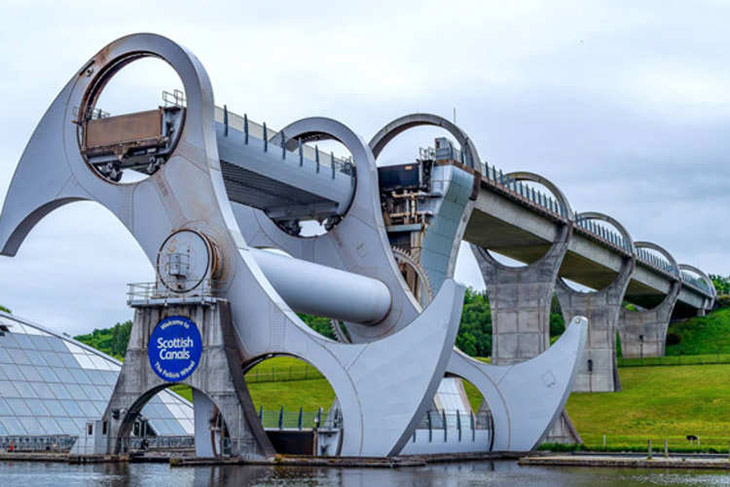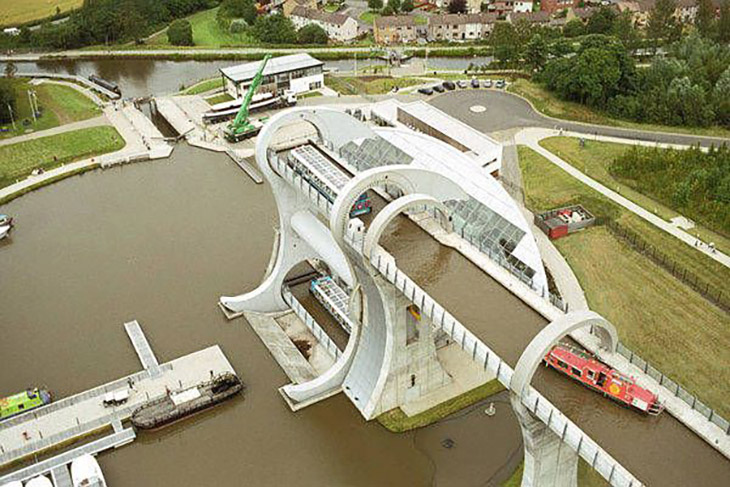
When it comes to tourism, wonderful sites are a must. Unfortunately, time destroys some of these areas. It’s up to the people to do something about it. The good news is that there is always a way to make changes and beautify what once was in disarray.
Scotland has been known for its breathtaking mountains and wonderful green sceneries. The canals now have also become a popular tourist spot. That’s because they’ve rebuilt what was unused and made it a home for the natural life living around it.
After more than a century of it being left alone, Scotland’s old coal barge canals have finally seen a beautiful change. They have been transformed into tranquil and green arteries of recreation and birdlife. People have been enjoying the tour, and it is with hope that they can invite more visitors to enjoy what they have worked so hard on.
The whole project has become a portion of a repurposing of commercial canals that run all across Europe. Scotland has become a major tourist attraction now because they have managed to link lovely destinations with the use of a mosaic of art installations, natural beauty, and small towns found in big cities. These canals were once constructed in order to supply the towns with the coal they needed.
The rivers are the Caledonian to the north, the Union and Crinan to the east, and the Monkland. The latter ran parallel to the Forth and Clyde. In the early 19th century, these canals had served as a funnel to the endless streams of coal to Glasgow. This event was actually one of the catalysts to the start of the industrial revolution.
Back then, you would witness pack animals that walk on the shores with ropes attached to a coal barge and as they tugged it forward with them. However, when steam-powered locomotives were invented, the canals fell into what they called redundancy.
Smithsonian details the jurisdiction when it comes to maintenance and use. This was given to several organizations. Unfortunately, many thought that these formerly respected lines of production were just a burden. The canals became dirty because of Alfred Nobel’s dynamite factory in Glasgow. They became a polluted sore of mercury and toxic substances.
Of course, all that had to change. The government started to think about large engineering projects to fund in order to modernize Scotland and bring it forward to the latest millennium. They approved a seriously cool project, which is a giant rotating boat elevator that brings together the Union and Forth of Clyde canals.

The project was known as the Falkirk Wheel. This is the first ever rotating boat lift. But it served more than just transporting people from one canal to the next. The goal was to clean up the canals as well. Between 1999 to 2003, the area hauled out old cars, discarded tires, and countless tons of contaminated soil. It was because of this that the canals were once again safe enough to ride on. And almost immediately, the canals became a recreational spot that featured diverse animal life.
George McBurnie, an architect who worked on the Falkirk Wheel, spoke about the opening and said that it was “absolutely ballistic,” and that the canals were “just awash with people celebrating.”
Grace Martin, Director at Sustrans Scotland also said, “The Forth & Clyde Canal towpath is a key route along the National Cycle Network, and we are delighted to join our partners at Scottish Canals in celebrating the anniversary of this well-loved walking, wheeling and cycling route reopening. We want to see a National Cycle Network of consistent and accessible paths for everyone, used and loved by every community that they serve.”
She added, “With support from Transport Scotland, our ongoing partnership with Scottish Canals has already seen transformative projects delivered along Route 78 (Caledonia Way), Route 754 (Central Canals) and Route 7 (Lochs and Glens Way), improving accessibility and experience for everyone choosing to walk, wheel and cycle. We look forward to continuing our work to deliver more accessible, consistent and attractive walking, wheeling and cycling opportunities along Scotland’s canal network together.”
This wonderful invention somewhat inspired others and created a chain reaction in society. Boating clubs, crew team boathouses, started showing up along the canals. With the changes also came waterfront cafes and property began to boost. Moreover, industrial metal girder and red brick manufacturing plants started to show up in the many districts.
Now, the waters of the canals are so clean that they are actually safe enough to swim in. With the green spaces, the return of aquatic wildlife, and the relaxing lifestyle, people from France and Germany took notice. They visited these areas in order to learn more about canal revivals so that they may do the same thing.
Several studies have also been made to see the effects of the improvements made. One saw how people in Glasgow living within 750 yards of a canal actually have lower risks of heart disease, diabetes and hypertension. They compared this to the others, independent of socio-economic factors, and have been impressed with the results they saw.
Richard Millar, Chief Operating Officer of Scottish Canals shared, “The work that has gone into the Forth & Clyde Canal over the last 20 years has been incomparable. At the turn of the century we began works to reconnect the Union and Forth & Clyde canals from sea to sea, with the knowledge that these underused and derelict waterways could be harnessed and turned into something much greater and more meaningful to the communities surrounding them.”
He also added, “Over the last 20 years we have and directly ensured the investment of £500m into the canals of Scotland and seen over £1.5bn of regeneration occur along the banks, transforming these once abandoned waterways into national assets with a purpose for the 21st century and beyond.”
What are your thoughts? Please comment below and share this news!
True Activist / Report a typo


